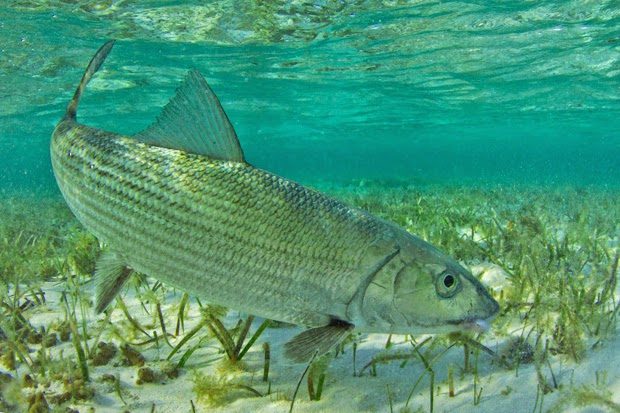The table presents selected examples of reflex action & injury vitality impairment testing.
Citations:
AFSC, Alaska Fisheries Science Center 2014 Observer Sampling Manual.
Fisheries Monitoring and Analysis Division, North Pacific Groundfish Observer Program. Seattle, WA.
Barkley, A.S. & Cadrin, S.X. 2012. Discard mortality estimation of yellowtail flounder using reflex action mortality predictors. Trans. Am. Fish. Soc. 141:638-644.
Benoît, H.P., Hurlbut, T., and Chassé, J. 2010. Assessing the factors influencing discard mortality of demersal fishes using a semi-quantitative indicator of survival potential. Fish. Res. 106:436-447.
Braccini, M., Van Rijn, J., and Frick, L. 2012. High post-capture survival for sharks, rays and chimaeras discarded in the main shark fishery of Australia? PLoS ONE 7: e32547.
Brownscombe, J.W., Thiem, J.D., Hatry, C., Cull, F. Haak, C.R., Danylchuk, A.J., and Cooke, S.J. 2013. Recovery bags reduce post-release impairments in locomotory activity and behavior of bonefish (Albula spp.) following exposure to angling-related stressors. J. Expt. Mar. Biol. Ecol. 440:207-215.
Brownscombe, J.W., Nowell, L., Samson, E., Danylchuk, A.J., & Cooke, S.J. 2014. Fishing-related stressors inhibit refuge-seeking behavior in released subadult Great barracuda. Trans. Am. Fish. Soc. 143:613-617.
Campbell, M.D., Patino, R., Tolan, J., Strauss, R., and Diamond, S.L. 2010.
Sub-lethal effects of catch-and-release fishing: measuring capture stress, fish impairment, and predation risk using a condition index. ICES J. Mar. Sci. 67:513-521.
Campbell, M.D., Tolan, J., Strauss, R., and Diamond, S.L. 2010. Relating angling-dependent fish impairment to immediate release mortality of red snapper (Lutjanus campechanus). Fish. Res. 106:64-70.
Danylchuk, A.J., Suski, C.D., Mandelman, J.W., Murchie, J.W., Haak, Brooks, A.M.L., and Cooke, S.J. 2014. Hooking injury, physiological status and short-term mortality of juvenile lemon sharks (Negaprion bevirostris) following catch-and-release recreational angling. Cons. Physiol. 2:cot036.
Davis, M. W. 2007. Simulated fishing experiments for predicting delayed mortality rates using reflex impairment in restrained fish. ICES J. Mar. Sci. 64:1535-1542.
Davis, M.W. & Ottmar, M.L. 2006. Wounding and reflex impairment may be predictors for mortality in discarded or escaped fish. Fish. Res. 82:1-6.
Depestele, J., Buyvoets, E., Calebout, P., Desender, M., Goossens, J., Lagast, E., Vuylsteke, D., and Vanden Berghe, C. 2014. Calibration tests for estimating reflex action mortality predictor for sole (Solea solea) and plaice (Pleuronectes platessa): preliminary results. ILVO-communication. Report nr. 158. 30p.
Diamond, S.L. & Campbell, M.D. 2009. Linking “sink or swim” indicators to delayed mortality in red snapper by using a condition index. Mar. Coast. Fish.: Dynamics, Manag. Eco. Sci. 1:107-120.
Donaldson, M.R., Hinch, S.G., Raby, G.D., Patterson, D.A., Farrell, A.P., and Cooke, S.J. 2012. Population-specific consequences of fisheries-related stressors on adult sockeye salmon. Physiol. Biochem. Zool. 85:729-739.
Hammond, C.F., Conquest, L.L., and Rose, C.S. 2013. Using reflex action mortality predictors (RAMP) to evaluate if trawl gear modifications reduce the unobserved mortality of Tanner crab (Chionoecetes bairdi) and snow crab (C. opilio). ICES J. Mar. Sci. 70:1308-1318.
Hannah, R.W. and Matteson, K.M. 2007. Behavior of nine species of Pacific rockfish after hook-and-line capture, recompression, and release. Trans. Amer. Fish. Soc. 136:24-33.
Humborstad, O-B., Davis, M.W., and Løkkeborg, S. 2009. Reflex impairment as a measure of vitality and survival potential of Atlantic cod (Gadus morhua). Fish. Bull. 107:395-402.
McArley, T.J. & Herbert, N.A. 2014. Mortality, physiological stress and reflex impairment in sub-legal Pagrua auratus exposed to simulated angling. J. Expt. Mar. Biol. Ecol. 461:61-72.
Raby, G.D., Donaldson, M.R., Hinch, S.G., Patterson, D.A., Lotto, A.G., Robichaud, D., English, K.K., Willmore, W.G., Farrell, A.P., Davis, M.W., and Cooke, S.J. 2012. Validation of reflex indicators for measuring vitality and predicting the delayed mortality of wild coho salmon bycatch released from fishing gears. J. Appl. Ecol. 49:90-98.
Stoner, A.W. 2012. Assessing stress and predicting mortality in economically significant crustaceans. Rev. Fish. Sci. 20:111-135.
Stoner, A.W., Rose, C.S., Munk, J.E., Hammond, C.F., and Davis, M.W. 2008. An assessment of discard mortality for two Alaskan crab species, Tanner crab (Chionoecetes bairdi) and snow crab (C. opilio), based on reflex impairment. Fish. Bull. 106:337-347.
Szekeres, P., Brownscombe, J.W., Cull, F., Danylchuk, A.J., Shultz, A.D., Suski, C.D., Murchie, K.J., and Cooke, S.J. 2014. Physiological and behavioural consequences of cold shock on bonefish (Albula vulpes) in The Bahamas. J. Expt. Mar. Biol. Ecol. 459:1-7.
Trumble, R.J., Kaimmer, S.M., and Williams, G.H. 2000. Estimation of discard mortality rates for Pacific halibut bycatch in groundfish longline fisheries. N. Amer. J. Fish. Manag. 20:931-939.
Yochum, N., Rose, C.S., and Hammond, C.F. 2015. Evaluating the flexibility of a reflex action mortality predictor to determine bycatch mortality rates: A case study of Tanner crab (Chionoecetes bairdi) bycaught in Alaska bottom trawls. Fish. Res. 161:226-234.






























